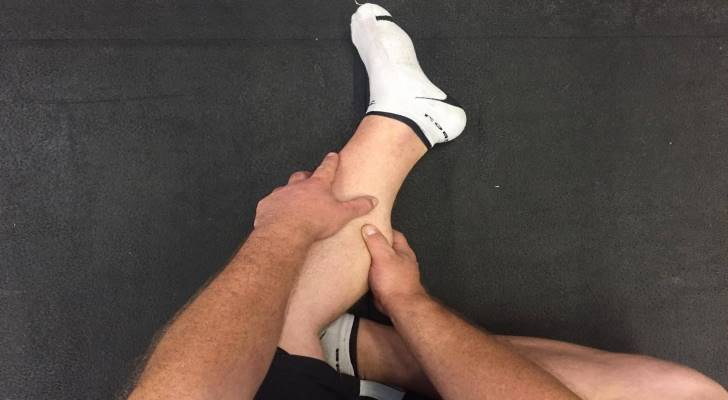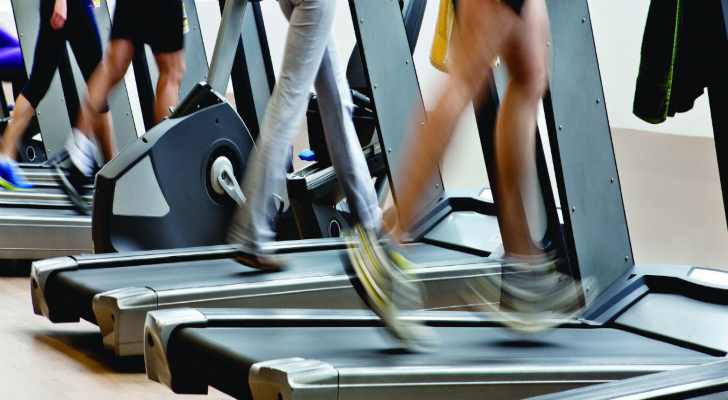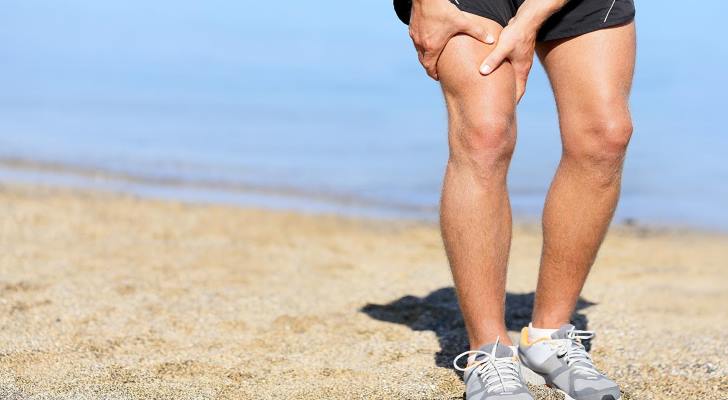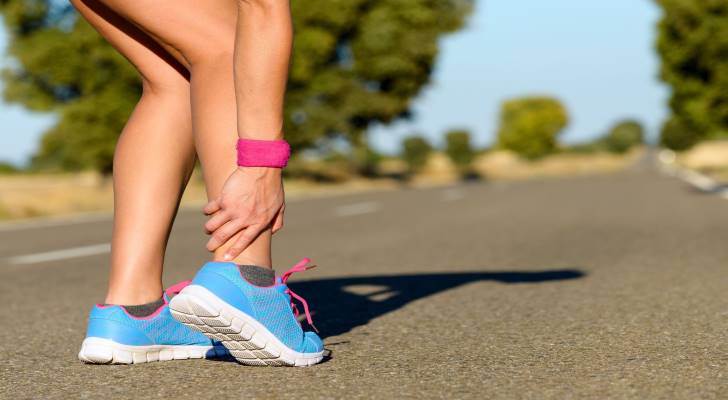 Definition of Shin Splints. Have you ever experienced a severe ache in the front of the lower extremities or tibia bone? It might be the obvious sign of the shin splints. Those people who devote time to the activities associated with the stressful situations are the most probable victims of this diagnosis. For instance, over training in a gym may lead to this health condition as it requires an active involvement of the lower limbs.
Definition of Shin Splints. Have you ever experienced a severe ache in the front of the lower extremities or tibia bone? It might be the obvious sign of the shin splints. Those people who devote time to the activities associated with the stressful situations are the most probable victims of this diagnosis. For instance, over training in a gym may lead to this health condition as it requires an active involvement of the lower limbs.
 In most cases, such professions as dancers, athletes, and military staff suffer most of all. It is important not to overwork in gym to avoid this problem. When the problem is present, it may lead to the serious injuries and traumas. On the whole, this phenomenon accounts for approximately 10.7% of traumas in male athletes and 16.8% of traumas in female athletes. Those are mostly people who do a lot of running.
In most cases, such professions as dancers, athletes, and military staff suffer most of all. It is important not to overwork in gym to avoid this problem. When the problem is present, it may lead to the serious injuries and traumas. On the whole, this phenomenon accounts for approximately 10.7% of traumas in male athletes and 16.8% of traumas in female athletes. Those are mostly people who do a lot of running.
 It is possible to guess that the overactive training is the primary cause of the shin splints. When people cause too much pressure on their shin bones, shin splints appear. It happens as the associated tissues that connect a shin bone to the muscles are forced excessively. As a result, the feeling of swelling and inflammation appears.
It is possible to guess that the overactive training is the primary cause of the shin splints. When people cause too much pressure on their shin bones, shin splints appear. It happens as the associated tissues that connect a shin bone to the muscles are forced excessively. As a result, the feeling of swelling and inflammation appears.
 Another case is when stressful situations impact the bone fractures. The ongoing pounding may lead to the episodic cracks in the bones of lower extremities. The only way to revive the damaged areas is to take a rest. Without relaxing for a while, the small cracks in the bones might end up a full fracture or stressful condition.
Another case is when stressful situations impact the bone fractures. The ongoing pounding may lead to the episodic cracks in the bones of lower extremities. The only way to revive the damaged areas is to take a rest. Without relaxing for a while, the small cracks in the bones might end up a full fracture or stressful condition.
 The signs of the shin splints are usually obvious and sensitive. A patient starts feeling ache and sensitivity in the damaged area (tibia). One more symptom is a possible swelling followed by the inflammation of the lower extremities. In terms of chronic shape of this disorder, various lumps may cover the body in the attacked area. In rare, serious cases, it is possible to notice red red patches on the body surface where the bones crack. From the beginning, the ache passes as the person stops exercising. Otherwise, it may become regular and severe.
The signs of the shin splints are usually obvious and sensitive. A patient starts feeling ache and sensitivity in the damaged area (tibia). One more symptom is a possible swelling followed by the inflammation of the lower extremities. In terms of chronic shape of this disorder, various lumps may cover the body in the attacked area. In rare, serious cases, it is possible to notice red red patches on the body surface where the bones crack. From the beginning, the ache passes as the person stops exercising. Otherwise, it may become regular and severe.
 Certain groups of people are under the risk of facing the shin splints. Different physical activities lead to this problem. The risk factors are weak muscles, absence of body’s flexibility, anatomical disorder (e.g., flat foot), wrong approach to training, incorrect shoes for training, and running excessively. As for the issues with running, the person risks facing the shin splints in case he or she runs downhill or on a slanted surface. Taking part in the types of activities that involve quick, sudden stops may also cause the condition.
Certain groups of people are under the risk of facing the shin splints. Different physical activities lead to this problem. The risk factors are weak muscles, absence of body’s flexibility, anatomical disorder (e.g., flat foot), wrong approach to training, incorrect shoes for training, and running excessively. As for the issues with running, the person risks facing the shin splints in case he or she runs downhill or on a slanted surface. Taking part in the types of activities that involve quick, sudden stops may also cause the condition.
 There are some known methods used to diagnose shin splints properly. First of all, an interview with the patient may help as the doctor discovers more about the individual’s past time, which includes sports. Most of the questions relate to the personal approach to training. Thus, those people who attend gyms regularly are under the threat of experiencing shin splints. It is important to describe the nature of pain and all other feelings accurately.
There are some known methods used to diagnose shin splints properly. First of all, an interview with the patient may help as the doctor discovers more about the individual’s past time, which includes sports. Most of the questions relate to the personal approach to training. Thus, those people who attend gyms regularly are under the threat of experiencing shin splints. It is important to describe the nature of pain and all other feelings accurately.
 Physical exam is a more accurate way to detect the reasons and possible outcomes of this health condition. Running is not the only cause of the shin splints; when the problem develops over time, it may result in a pain during a simple walk. A sensitivity to palpation is another thing, which helps to detect the core of the problem. Other methods of diagnosis include X-rays, bone tests, and MRI. They help to make a difference between a real shin splint and a stress fracture. As for the X-rays technique, it might be useful in defining bone thickening.
Physical exam is a more accurate way to detect the reasons and possible outcomes of this health condition. Running is not the only cause of the shin splints; when the problem develops over time, it may result in a pain during a simple walk. A sensitivity to palpation is another thing, which helps to detect the core of the problem. Other methods of diagnosis include X-rays, bone tests, and MRI. They help to make a difference between a real shin splint and a stress fracture. As for the X-rays technique, it might be useful in defining bone thickening.
 How can one prevent the shin splints? Some of the measures listed in this section will assist in preventing the shin splints. First of all, it is necessary to put on special trainers with correct support. If you do not know which shoes to choose, it is better to contact a shop consultant or sports expert before making a buy.
How can one prevent the shin splints? Some of the measures listed in this section will assist in preventing the shin splints. First of all, it is necessary to put on special trainers with correct support. If you do not know which shoes to choose, it is better to contact a shop consultant or sports expert before making a buy.
 It is recommended to run and train on flat, mild floors or grounds. Pick specialized sports field for your training. It is necessary to combine excessive physical exercises such as running and jumping with less severe exercises like doing yoga. Experts recommend losing some extra weight in case of its presence. It is important to improve the general body flexibility with the special exercises and habits. Never forget to warm up before each new training. Try stretching the front of the extremities, for instance.
It is recommended to run and train on flat, mild floors or grounds. Pick specialized sports field for your training. It is necessary to combine excessive physical exercises such as running and jumping with less severe exercises like doing yoga. Experts recommend losing some extra weight in case of its presence. It is important to improve the general body flexibility with the special exercises and habits. Never forget to warm up before each new training. Try stretching the front of the extremities, for instance.


